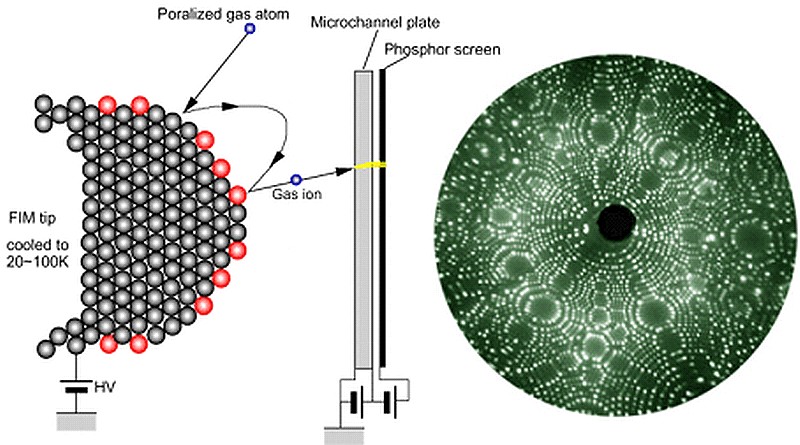
Principle of the method
In the Field Ion Microscope (FIM) gas ions are formed by field ionisation in the high electric field applied to the fine needle shaped specimen tip. The gas ions are accelerated in the strong inhomogeneous field and are forming an enlarged direct projection of the surface on the screen. If the specimen tip is kept on very low temperatures the imaging gas ions are keeping almost on the field trajectories and atomic resolution can be obtained.If the electric field is further increased above a critical value surface atoms will be ionized and desorbed as positive ions. This process called as field desorption can be used for:
- Cleaning the surface
- Removing surface atoms layer by layer and study the sample into depth
- Mass spectrometric analysis of surface species layer by layer into depth
The combination of the FIM with a time-of-flight mass spectrometer is labelled as Atom probe (AP). With this instrument the chemical nature of the species can be mapped out in two and three dimensions in an atomic scale (Tomographic atom probe or 3D atom probe).